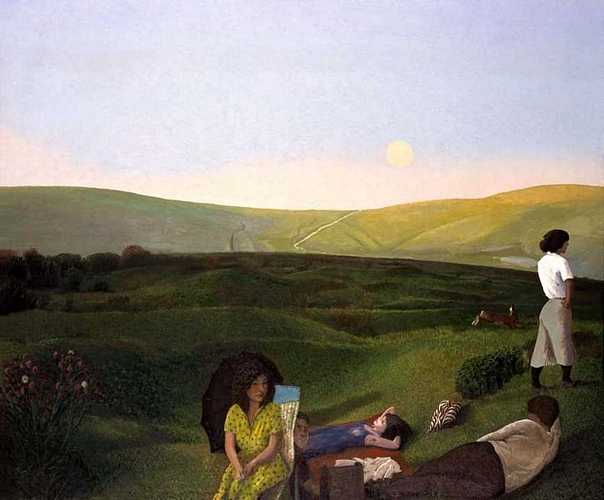5. One moment one summer
The 18th-century philosopher George Berkeley thought that things were only there when he looked at them. When he looked away they ceased to exist. David Inshaw's paintings have the same quality. That summer, late May with candles on the chestnut trees, existed only because he saw it. When he looked away, it was no longer there.
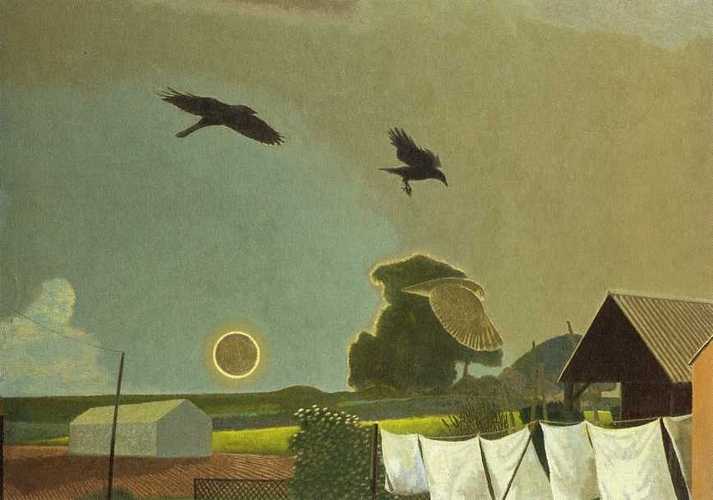
The evidence for it is left embedded unmistakably in the thick surface of the paint. There can be no mistaking the window flung open, the girl coming out of the bell tent, the eclipse, the ship burning below the chalk cliff, the meeting, nor the haircuts like topiary. But something odd has happened to time.
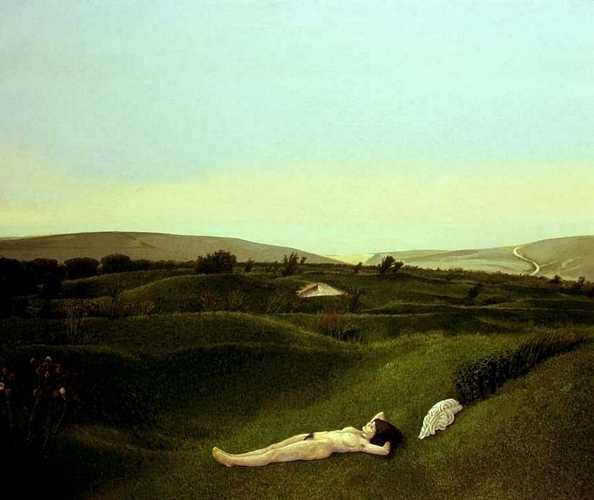
Take the picture of an eclipse in A Dramatic Incident in the Wiltshire Landscape. Fooled by the darkness, an owl has come out to hunt and is mobbed. The painting shows the precise moment of total eclipse, not just before it or just afterwards: a precise moment that recurs only at very long intervals. But there are other intervals, other aspects of time, in the picture as well. The washing is done perhaps once a week; the may tree flowers and the field is ploughed once a year, and the tumulus on the horizon is immeasurably old.
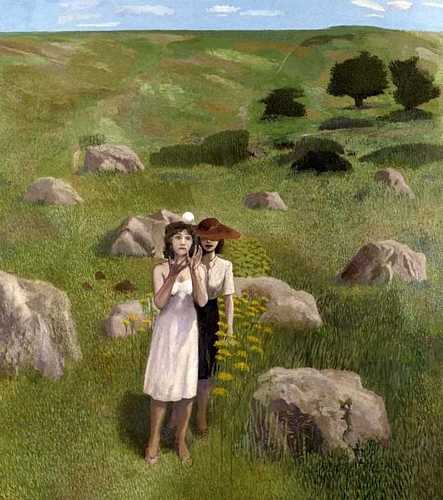
One of the problems about pictures is that, being static, they show one moment to the exclusion of others. By depicting a moment they give it particular significance whether it is significant or not. Do you remember Inshaw's cricket picture of 1976, a game played among dreaming trees and long downland shadows? He has often painted games. They have no particular significance except that they occupy time and there are specific moments in them that are crucial. Cricket is a game in which, if you look away for a moment, you miss seeing the catch.
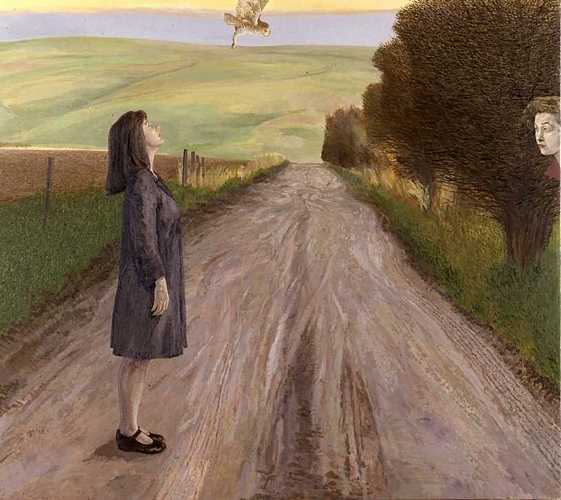
His most recent pictures are almost all of specific incidents. By painting the incident itself, rather than what led up to it or what results from it, he avoids choosing just any moment. He fastens on the memorable moment of the eclipse. He saw it and it is unmistakable, is what the paintings seem to say. But did he? Blind man's buff – the subject of three big pictures – is a game in which, when unable to see, you have the odd sensation of being unseen yourself.
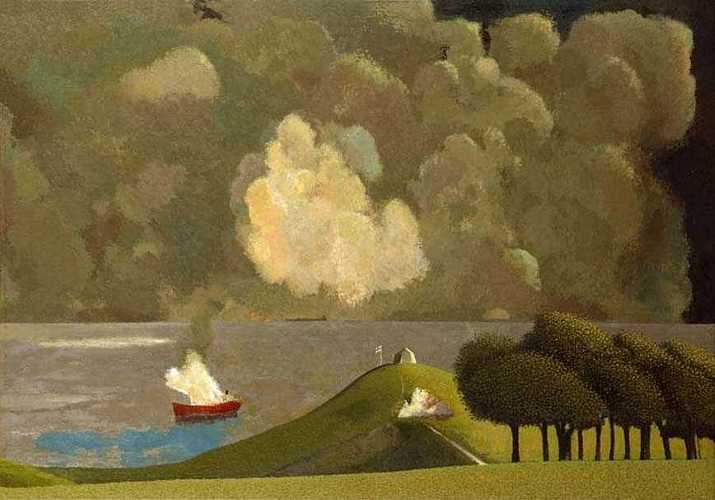
The places, some of them, are real enough. When uncertain whether you are awake or dreaming, the first impulse is to check your surroundings. The farm buildings in the eclipse picture are near Avebury, not far from where the artist lives. The landscape with a nude lying full-length on the grass, staring up into the sky, is near Rybury camp in the vale of Pewsey, one of the first and most evocative places Inshaw walked up to when he first went to live in Wiltshire. The room with the black and white floor and black grate in the indoor blind-man's-buff picture is his own. The path below which the red ship is burning is along the Dorset coast, at St Aldhelm's Head.
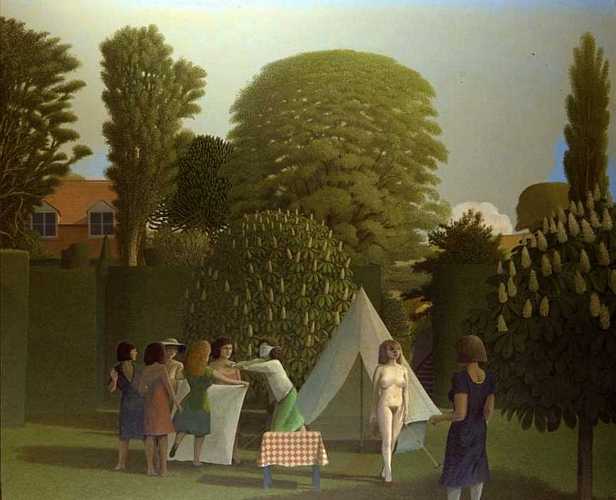
But other places, just as real and painted with as much conviction, belong to his own mythology and must depend for their effect on being recognisable parts of some kind of collective subconscious. The garden in The Garden, or the Game of Blind Man's Buff, is like no garden you ever saw and yet you recognise it. The picture contains many of the ingredients Inshaw has made familiar over the last ten years, as though going over them a last time before moving on. When he first painted topiary pictures, he did not realise that his grandfather had cut cemetery topiary. There is the odd quality of loomingness, in the trees and in the cumulus swelling on the distant down. The dormer windows and the chimney only partly visible through the tree remind you of the dormer window which a naked girl opens or closes, the curtain blowing, in another picture; that, in turn, reminds you of the window and blowing curtains of Alf's Return ten years ago, which is close to Stanley Spencer territory. Inshaw's other grandfather, a smallholder, was like Stanley Spencer's God, complete with belt and braces.
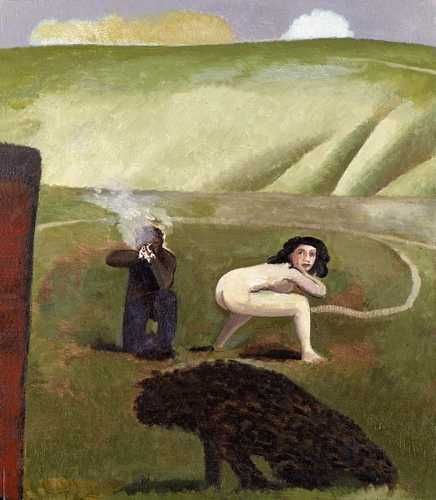
As though to reiterate that even the places are not what they seem, one of the indoor blind-man's-buff pictures includes a painting which hangs above the mantelpiece. It is a large landscape, by David Inshaw, of Bristol. You can see the railway sidings and docks and the tobacco bonded warehouses below Clifton in hazy light, the view from his kitchen window fifteen years ago. But he did not paint it then, although he always meant to, and the picture does not exist.
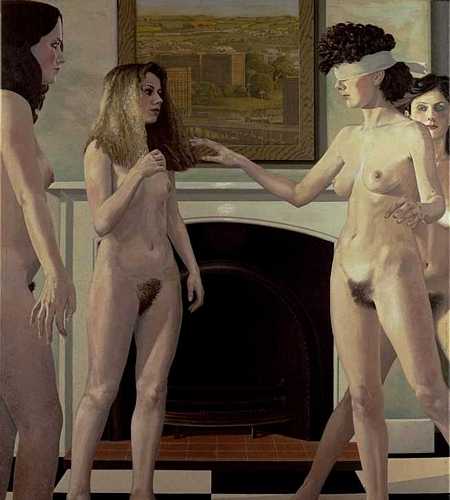
Do the people in the paintings exist except in fantasy? One figure, glimpsed over another's shoulder in a picture called The Meeting, has all the signs of being painted from a snapshot or a newspaper cutting, as Sickert used to do. Sickert thought painting from photographs was like drinking, all right if you were not addicted to it, and used it deliberately to distance himself from the subject, to paint people he had no feelings about. The smile and downcast eyes of the girl in the Inshaw picture are good examples of his use of an incident. Look away and you miss it, just as in a religious picture you look away and miss the Resurrection or the raising of Lazarus. To Inshaw the girl is not just anybody and the moment is significant.
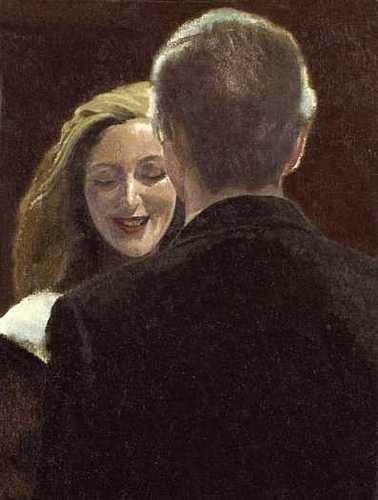
This is the most difficult area in the pictures between fantasy and reality. The girl who emerges startlingly from the tent in The Garden, or the Game of Blind Man's Buff to confront another must be recognisable. Perhaps she is his dentist's daughter or works in a bank or was seen at a bus stop, but she is not just anybody: the pitch of the likeness tells you that. The question is whether he has any feelings about her. The effect of covering somebody's head, as in the blind-man's-buff pictures, is to emphasise their body as an object. Inshaw was inspired by an Eakins nude with her head covered, and there are other, more terrible, images of covered heads like Magritte's. Either he has deliberately chosen people he has no attachment to in order to concentrate on the picture itself, or else, much more characteristically, it is his strong feelings about people that constantly engage with his odd imagery.
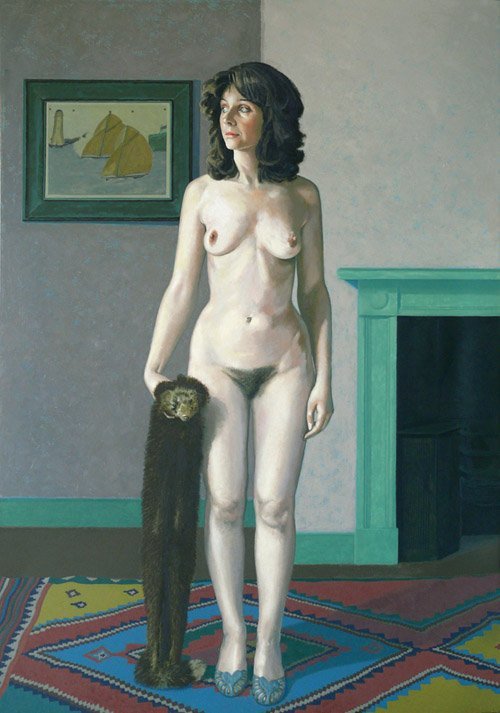
The oddness does not diminish when he knows someone well and paints them with absolute deliberation from head on. In the large single nudes, their nakedness seems if anything to emphasise the inwardness of their character. The Beatrice Phillpotts picture, much better with its grey background than when it was shown at the Tate, belongs among the wittiest recent paintings of self-portrait and nude, whether it is or not.
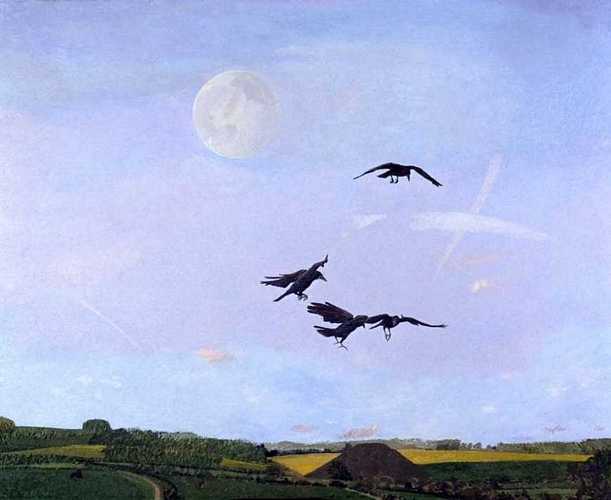
In the picture of Fiona James, strangeness is heightened by patterns, wedged deep in the paint: the plaited-hair pattern of the wicker chair, the cactus like an unapproachable version of the girl's torso and like his old image of the candle-covered chestnut trees; her hair like topiary, and the patterned material behind her like the starry sky of the Cambridge Observatory pictures. Elsewhere, cropped grass on the undulations of the Wiltshire landscape is analogous to the girl who has thrown herself down on it, and the stripes in her dress become the stripe of the distant path. All this is lastingly odd. In Inshaw's world you are certain to be feeling Pewsey.
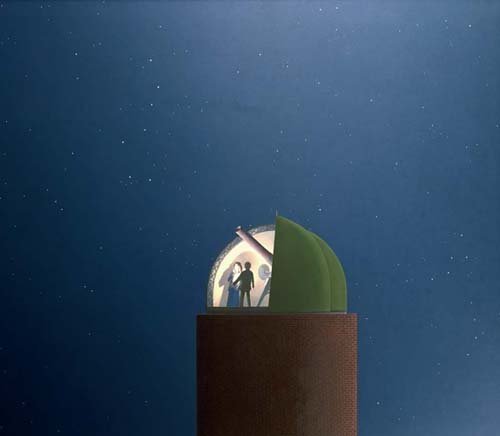
David Inshaw's work has changed in the past two years. His strange world, set going through the long series of adjustments and revisions that make up a painting, arrives at crucial incidents faster now and with great precision. He once said that not to finish a picture would be like dying during a Test series: you would never know the outcome. But it is a more ambiguous and melancholy imagination at work than that. Once glimpsed in the new pictures, it can no more be kept out of your own head than you can brick up a window to keep out a cockatrice.
